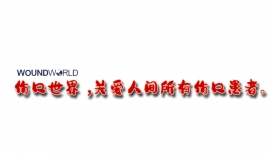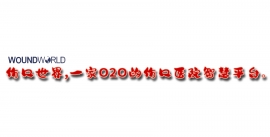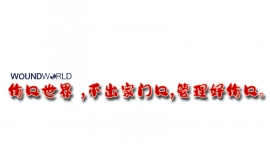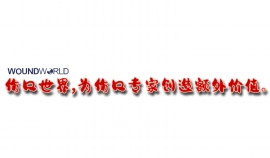文献精选
Angelo Emilio Claro1,2 · Clelia Palanza3 · Marianna Mazza1,2 · Andrea Corsello4 · Alessandro Rizzi4 · Linda Tartaglione4 · Chiara de Waure5 · Giuseppe Marano1,2 · Simone Piciollo6 · Giovanna Elsa Ute Muti Schuenemann7 · Marta Rigoni8 · Paola Muti8 · Alfredo Pontecorvi9 · Luigi Janiri1,2 · Gabriele Sani1,2 · Dario Pitocco4
Received: 29 July 2022 / Accepted: 7 October 2022 / Published online: 7 November 2022 © The Author(s) 2022
Abstract
Aims Common Psychiatric Disorders (CPDs) are associated with the development of overweight and obesity, the strongest risk factors for the onset and maintenance of Type 2 Diabetes mellitus (T2D). To the best of our knowledge, this is the frst study to assess the prevalence of CPDs in patients with T2D in Italy.
Methods This is a monocentric cross-sectional study; n=184 T2D patients were screened for CPDs using the Patient Health Questionnaire (PHQ). Primary outcome was to evaluate the prevalence of CPDs. To assess association between CPDs and risk factors, we have utilized univariable logistic regression models.
Results 64.1% were men, median age was 67 (59–64) and median BMI 27 (25–30) kg/m2 . The 42.9% tested positive for one or more mental disorders, 25.6% for depression. Patients with higher BMI (p=0.04) had an increased likelihood of testing positive to the PHQ. Patients who had implemented lifestyle changes (p<0.01) and were aware that mental health is linked to body health (p=0.07) had a reduction in the likelihood of testing positive.
Conclusions Prevalence of CPDs in T2D patients is higher than in the general population. Since CPDs favor the onset and subsistence of T2D, integrated diabetic-psychiatric therapy is required for improvement or remission of T2D in patients with comorbid CPDs.
Keywords Diabetes Mellitus Type 2 · Italy · Mental Disorders · Depression · Feeding and Eating Disorders · Alcohol Induced Disorders
Managed by Massimo Porta.
* Dario Pitocco
该Email地址已收到反垃圾邮件插件保护。要显示它您需要在浏览器中启用JavaScript。
J. Gómez de Tejada‑Romero1,2· P. Saavedra‑Santana3 · F. de la Rosa‑Fernández1 · N. Suárez‑Ramírez1 ·Martín‑Martínez1,4· F. Martín del Rosario1 · M. Sosa‑Henríquez1,5
Received: 1 April 2022 / Accepted: 14 June 2022 / Published online: 4 July 2022 © The Author(s) 2022
Abstract
Aims To see the effects of obesity on risk fracture, bone density (BMD), and vitamin D levels in a group of postmenopausal women, and consider how comorbid type 2 diabetes mellitus (T2DM) modifies them.
Methods 679 postmenopausal women were grouped into obese and non-obese. Obese women were grouped into those with T2DM and those without. 25(OH)-vitamin D, PTH and BMD were measured, and prevalent fragility fractures were gathered.
Results Obese women had higher prevalence of T2DM, than non-obese women. Levels of 25(OH)-vitamin D were lower and those of PTH higher in obese women, BMD values were higher in obese women. Diabetic-obese women had a higher prevalence of non-vertebral fractures than non-diabetic-obese. Multivariate logistic regression model showed association of fragility fractures with age, total hip BMD, BMI and T2DM. Obese women have higher BMD and lower 25(OH)-vitamin D values (and higher PTH) than non-obese, without diabetes.
Conclusions T2DM confers an increased risk of non-vertebral fractures in postmenopausal obese women.
Keywords Obesity · Diabetes Mellitus type 2 · Vitamin D · Fragility fractures · Osteoporosis
Managed by Massimo Porta. M. Sosa-Henríquez 该Email地址已收到反垃圾邮件插件保护。要显示它您需要在浏览器中启用JavaScript。
1 Research Group On Osteoporosis and Mineral Metabolism, University of Las Palmas de Gran Canaria, Las Palmas de Gran Canaria, Spain
2 Department of Medicine, University of Seville, Seville, Spain
3 Department of Mathematics, University of Las Palmas de Gran Canaria, Las Palmas de Gran Canaria, Spain
4 Gynecology and Obstetrics Service, Maternal-Infant Insular University Hospital Complex, Las Palmas de Gran Canaria, Spain
5 Bone Metabolic Unit, Maternal-Infant Insular University Hospital Complex, Las Palmas de Gran Canaria, Spain
Zhuofan Yang1 · Zhuyu Li1 · Yunjiu Cheng2 · Peisong Chen3 · Dongyu Wang1 · Haitian Chen1 · Wei Chen1 · Zilian Wang1
Zhuofan Yang, Zhuyu Li, Yunjiu Cheng have contributed equally to this work.
Zilian Wang 该Email地址已收到反垃圾邮件插件保护。要显示它您需要在浏览器中启用JavaScript。
1 Department of Obstetrics and Gynaecology, The First Affiliated Hospital of Sun Yat-Sen University, 58 Zhongshan Rd II, Guangzhou 510080, China
2 Department of Cardiology, The First Affiliated Hospital of Sun Yat-Sen University, Guangzhou, China
3 Department of Clinical Laboratory, The First Affiliated Hospital of Sun Yat-Sen University, Guangzhou, China
Received: 19 February 2022 / Accepted: 12 May 2022 / Published online: 5 July 2022 © The Author(s) 2022
Abstract
Aims To assess lipid trajectories throughout pregnancy in relation to early postpartum glucose intolerance in women with gestational diabetes mellitus (GDM).
Methods This prospective cohort study included 221 Chinese women with GDM who completed plasma lipid test in each trimester of pregnancy and oral glucose tolerance test at 6–9 weeks postdelivery between January 1, 2018 and January 8, 2020. Using the group-based trajectory modeling, total cholesterol (TC), triglyceride (TG), low-density lipoprotein-cholesterol (LDL-c), and high-density lipoprotein-cholesterol(HDL-c) were identifed separately as three trajectories: low, moderate, and high trajectory. The associations between lipid trajectories and early postpartum glucose intolerance were all evaluated.
Results Seventy-three participants developed postpartum glucose intolerance. For patients in low, moderate and high trajectory, the incidence of postpartum glucose intolerance was 38.4%, 34.9%, and 17.9%, respectively. GDM women with lower LDL-c trajectories presented a higher risk of postpartum glucose intolerance. The adjusted odds ratio (95% CI) for glucose intolerance was 3.14 (1.17–8.39) in low LDL-c trajectory and 2.68 (1.05–6.85) in moderate trajectory when compared with the high one. However, TC trajectory was not associated with the risk of postpartum glucose intolerance, nor were TG trajectory and HDL-c trajectory. Moreover, a significant difference of insulin sensitivity was observed in participants with different LDL-c trajectories; participants in high LDL-c trajectory had the highest insulin sensitivity, whereas the women in low LDL-c trajectory had the lowest insulin sensitivity (P=0.02).
Conclusions The high trajectory of LDL-c during pregnancy may play a protective role on postpartum glucose intolerance in women with GDM. Further studies are warranted to explore the underlying mechanism. Trial registration The study was reviewed and approved by the Institutional Review Board of The First Affiliated Hospital of Sun Yat-sen University (reference number: [2014]No. 93). All participants provided written informed consent forms, and the ethics committee approved this consent procedure.
Keywords Lipid trajectory · Glucose intolerance · Gestational diabetes mellitus · Insulin sensitivity
This article belongs to the topical collection Pregnancyand Diabetes, managed by Antonio Secchi and Marina Scavini.
Abbreviations
GDM Gestational diabetes mellitus
GBTM Group-based trajectory modeling
TC Total cholesterol
TG Triglyceride
LDL-c Low-density lipoprotein-cholesterol
HDL-c High-density lipoprotein-cholesterol
PGDM Pregestational diabetes mellitus
OGTT Oral glucose tolerance test
FBG Fasting blood glucose
HOMA-IS Homeostasis model assessment-IS
BIC Bayesian information criterion
AvePP Average posterior probability
NODM New-onset diabetes mellitus
LDLR Low-density protein receptor
Zhuofan Yang1 · Zhuyu Li1 · Yunjiu Cheng2 · Peisong Chen3 · Dongyu Wang1 · Haitian Chen1 · Wei Chen1 · Zilian Wang1
1 Department of Obstetrics and Gynaecology, The First Affiliated Hospital of Sun Yat-Sen University, 58 Zhongshan Rd II, Guangzhou 510080, China
2 Department of Cardiology, The First Affiliated Hospital of Sun Yat-Sen University, Guangzhou, China
3 Department of Clinical Laboratory, The First Affiliated Hospital of Sun Yat-Sen University, Guangzhou, China Received: 19 February 2022 / Accepted: 12 May 2022 / Published online: 5 July 2022 © The Author(s) 2022
Abstract
Aims To assess lipid trajectories throughout pregnancy in relation to early postpartum glucose intolerance in women with gestational diabetes mellitus (GDM).
Methods This prospective cohort study included 221 Chinese women with GDM who completed plasma lipid test in each trimester of pregnancy and oral glucose tolerance test at 6–9 weeks postdelivery between January 1, 2018 and January 8, 2020. Using the group-based trajectory modeling, total cholesterol (TC), triglyceride (TG), low-density lipoprotein-cholesterol (LDL-c), and high-density lipoprotein-cholesterol(HDL-c) were identified separately as three trajectories: low, moderate, and high trajectory. The associations between lipid trajectories and early postpartum glucose intolerance were all evaluated.
Results Seventy-three participants developed postpartum glucose intolerance. For patients in low, moderate and high trajectory, the incidence of postpartum glucose intolerance was 38.4%, 34.9%, and 17.9%, respectively. GDM women with lower LDL-c trajectories presented a higher risk of postpartum glucose intolerance. The adjusted odds ratio (95% CI) for glucose intolerance was 3.14 (1.17–8.39) in low LDL-c trajectory and 2.68 (1.05–6.85) in moderate trajectory when compared with the high one. However, TC trajectory was not associated with the risk of postpartum glucose intolerance, nor were TG trajectory and HDL-c trajectory. Moreover, a significant difference of insulin sensitivity was observed in participants with different LDL-c trajectories; participants in high LDL-c trajectory had the highest insulin sensitivity, whereas the women in low LDL-c trajectory had the lowest insulin sensitivity (P=0.02).
Conclusions The high trajectory of LDL-c during pregnancy may play a protective role on postpartum glucose intolerance in women with GDM. Further studies are warranted to explore the underlying mechanism. Trial registration The study was reviewed and approved by the Institutional Review Board of The First Affiliated Hospital of Sun Yat-sen University (reference number: [2014]No. 93). All participants provided written informed consent forms, and the ethics committee approved this consent procedure.
Keywords Lipid trajectory · Glucose intolerance · Gestational diabetes mellitus · Insulin sensitivity
This article belongs to the topical collection Pregnancyand Diabetes, managed by Antonio Secchi and Marina Scavini.
Zhuofan Yang, Zhuyu Li, Yunjiu Cheng have contributed equally to this work. Zilian Wang 该Email地址已收到反垃圾邮件插件保护。要显示它您需要在浏览器中启用JavaScript。
Abbreviations
GDM Gestational diabetes mellitus
GBTM Group-based trajectory modeling
TC Total cholesterol
TG Triglyceride
LDL-c Low-density lipoprotein-cholesterol
HDL-c High-density lipoprotein-cholesterol
PGDM Pregestational diabetes mellitus
OGTT Oral glucose tolerance test
FBG Fasting blood glucose
HOMA-IS Homeostasis model assessment-IS
BIC Bayesian information criterion
AvePP Average posterior probability
NODM New-onset diabetes mellitus
LDLR Low-density protein receptor




